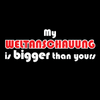 There’s a wonderful German word, die Weltanschauung, which roughly translates as a view of the world. It suggests there is a framework of ideas and beliefs behind people’s descriptions of various things in the world. I was reminded of Weltanschauung at this week’s London Agile Content Meetup, where Rahel Bailie neatly summed up some of the different views of content, content strategy and single sourcing.
There’s a wonderful German word, die Weltanschauung, which roughly translates as a view of the world. It suggests there is a framework of ideas and beliefs behind people’s descriptions of various things in the world. I was reminded of Weltanschauung at this week’s London Agile Content Meetup, where Rahel Bailie neatly summed up some of the different views of content, content strategy and single sourcing.
Baked v Fried content

CMS Wiki described baked content as “pages that have been generated by a Content Management System, but then moved to a static delivery server, which can serve them at high speed and high volume”. The word “baked” is used, because this approach means you cannot separate the content from the format afterwards. They are baked together.
“Fried” content is where the Web pages are built “on the fly” when they are requested by the end user. Rahel used the example of frying eggs: if you put too many eggs into the frying pan, you can always remove one. Fried content may take a little longer to generate than baked content, but this approach enables you to personalise and filter the content. It also means you can present the information in different ways, depending on which device a person is using.
COPE through technology v COPE through authoring
COPE (Create Once, Publish Everywhere) is another way of describing single sourcing content.
“COPE through technology” is the view that the content is essentially data that can be managed through software. If you need to create a personalised or filtered view of the content, you get a developer to create that version. If you need to create a mobile-ready version of your site, again you get a developer to do this. Content is often created by completing forms, in order to create structured information.
“COPE through authoring” is the view that the writers can do all of the fine-grain manipulation of content. If you need to create a personalised or filtered view of the content, you get the Technical Author to mark up sections for those different conditions in the content itself. To quote Rahel, “You can then run a transformation script run, which compiles the content into its final form, and uploads the content to the Web CMS, or other publishing platform, for consumption and presentation.” The advantage of this approach is it stops you from being tied to a technology or application. The disadvantage is it relies on your writers being able to mark up and structure the text correctly.
It’s important to be aware of these distinctions when you talk about content, content strategy and single sourcing, because your Weltanschauung may not be shared by the person you’re talking to.
See also: Introduction to Content Strategy Training – Classroom and Online Courses

Leave a Reply